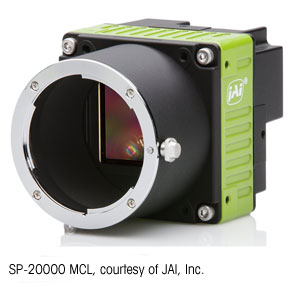
Color machine vision has its challenges.
Systems can produce three times the data (or less than one-third the resolution) of a monochrome camera solution. Color can introduce more potential sources for imaging errors, more complexity, more cost, and require careful engineering that reduces the system’s flexibility to deal with lines that make products of varying shape, colors, and size. In fact, if designers can find a way to use filters and lighting to measure a colored area using monochrome cameras, they usually do.
White LEDs are made one of two ways: by applying a phosphor coating over a blue LED light that produces a broadband light closer to white light, or by mixing different-colored LEDs to make a broadband light source. Both methods result in a spectral continuum that is higher in some narrow wavelength bands within the white light spectrum compared to others. For the most challenging color vision applications, designers need to carefully match these “spikes” to the specific wavelengths. This is where choosing a lighting supplier with in-house engineers can really help, adds Metaphase’s Technical Sales Manager, Mark Kolvites. A quality supplier will make sure that the actual red, green, and blue (or more) LEDs mix to create a white light, or the blue LEDs with phosphor coating provide uniform illumination without hotspots that can cause trouble for automated inspection systems.
As the information above shows, color machine vision solutions can require in-depth knowledge of the physics behind machine vision. The good news is that by choosing the right supplier and partner, designers can solve applications where success isn’t just black and white.
refer to:http://www.visiononline.org/vision-resources-details.cfm/vision-resources/Is-Your-Machine-Vision-System-Color-Blind/content_id/4333
